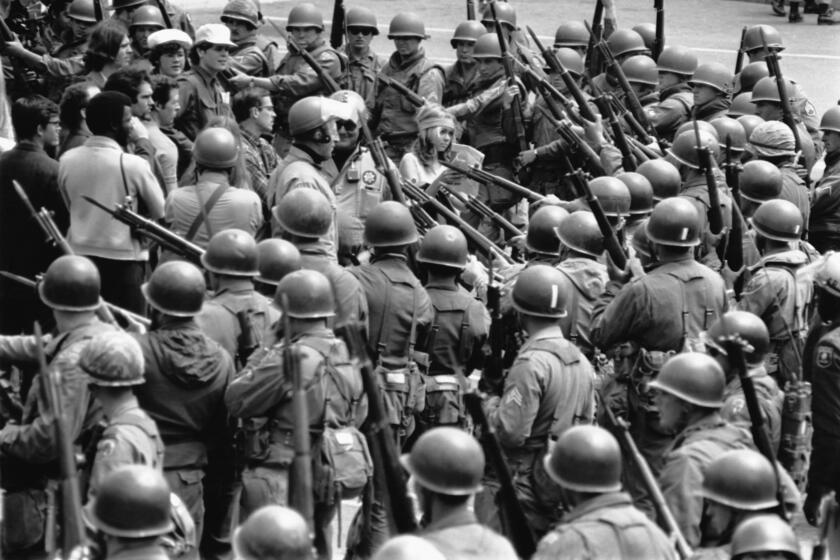Free the old, fix the prisons
CALIFORNIA’S PRISONS are in crisis, bursting at the seams with nearly twice as many inmates as they were designed to hold. Things are so bad that this month, federal judges will begin holding hearings on whether to impose inmate population caps. The Legislature’s solution: build 53,000 new prison beds, at a jaw-dropping estimated cost of $7.4 billion. Gov. Arnold Schwarzenegger has already started transferring the first of thousands of convicts to other states. But there’s at least one safe, simple and immediate thing the state could do that would free up prison beds and save millions: parole inmates who are too old to be dangerous.
Prisoners are expensive to confine, and none more so than elderly ones. The typical inmate costs California taxpayers more than $34,000 a year, according to the state Department of Corrections and Rehabilitation. But elderly inmates typically cost up to three times more, primarily because of their greater medical needs. Many older prisoners are five to 10 years “older” physiologically than their chronological age, their bodies prematurely worn down from years of alcohol and drug abuse and the stress of prison life. According to the Washington-based Project for Older Prisoners, the typical convict who is 55 or older -- considered geriatric among prison experts -- will suffer three chronic illnesses while incarcerated. And taxpayers foot every penny of their medical bills. That’s no small matter in a state where the correctional system has grown to gargantuan proportions. Fifteen years ago, California incarcerated about 105,000 inmates; today, it holds more than 170,000, at an annual cost exceeding $8 billion.
Healthcare costs have grown even faster. The Department of Corrections will spend almost $1.8 billion on medical care this year, double the amount of just five years ago. That’s partly because the number of elderly prisoners also has surged in the last decade, the result of baby-boom demographics and ever-lengthening sentences.
By the Department of Corrections’ own count, it now holds more than 9,000 prisoners 55 or older, many of them already in such dismal health that they couldn’t commit new crimes if they wanted to. Nearly half of them are 60 or older. If you move the bar up to age 70, that still leaves hundreds of inmates. Paroling just those septuagenarians could save tens of millions of dollars annually.
Of course, not every prisoner 55 or older could be safely released. Many committed serious crimes and are in good enough health that they need to be locked up. But in general, releasing ailing elderly prisoners under the ongoing supervision of a parole officer is a pretty safe bet. Study after study has found that the recidivism rate for prisoners 55 or older is far lower than that of younger ones. And the cost of monitoring a convict in California on parole is about one-eighth that of keeping one in prison.
There’s a nonfinancial benefit too. Letting sick, feeble old men and women live out their last days at home with their families is more humane than letting them slowly disintegrate in cellblocks filled with predatory younger inmates. Even those who would wind up alone on the outside, living off Social Security, veterans benefits or welfare still would cost taxpayers less than keeping them in prison.
Several other cash-strapped states are releasing nonviolent offenders to save money, including such law-and-order bastions as Virginia and Louisiana. And California, like many states, already has little-used policies allowing for compassionate release of sick or elderly inmates deemed harmless.
Nobody wants to see dangerous felons let loose just to save money. But letting hundreds of old men and women in poor health go home, under the scrutiny of parole agents, hardly seems like much of a threat. Would we really rather keep old convicts behind bars and cut funding for kindergartens and hospitals?
More to Read
Get the L.A. Times Politics newsletter
Deeply reported insights into legislation, politics and policy from Sacramento, Washington and beyond. In your inbox three times per week.
You may occasionally receive promotional content from the Los Angeles Times.






